Facts About The Legendary Comedy Group Monty Python That Prove They Are The Holy Grail
Graham Chapman, John Cleese, Terry Gilliam, Eric Idle, Terry Jones, and Michael Palin were the surreal British comedy group who would become known as Monty Python. The Pythons started out as a sketch comedy show which has become one of the most important shows in the evolution of television and comedy. All six men weren't afraid to push boundaries of what was acceptable in style and content.
Thanks to the Python's and the entertaining Flying Circus series, the show quickly gave the comedy troupe a chance to create more. They created a series of satirical biblical films with the help of a former Beatle, and one of their sketches coined the term "spam mail". To this day, Monty Python and its members remain popular, and relevant, even though they've been around since the sixties.
The Inspiration Behind The Flying Circus
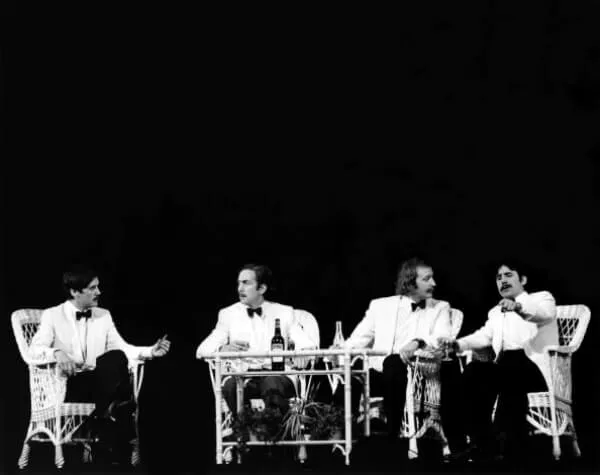
Spike Milligan, who created The Goon Show, a surrealistic radio program which starred himself. Milligan than moved to television with Q. The first series, Q5, debuted less than a year before Monty Python's Flying Circus made an impact.
Both Michael Palin and Terry Jones adored Milligan's shows because they were filled with surrealism and invention. When it came to Python, both Palin and Jones were so impressed that they looked for the name of the director on the end credits, and they hired him. That's how they met Ian MacNaughton.
What's In A Name
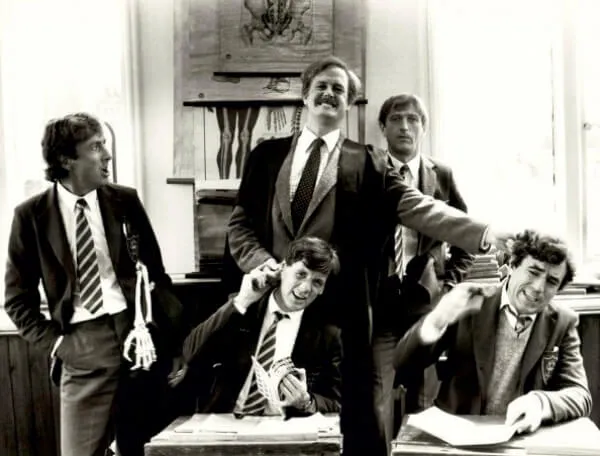
The Pythons knew how they wanted to go about with their comedy show, but the name of it had so many potential titles. One executive from BBC originally wanted to name the series Baron von Took's Flying Circus as a tribute to Barry Took, who brought the Python's and BBC together.
Other considerations for the title included: Owl Stretching Time, Bunn, Wackett, Stubble and The Algy Banging Hour. BBC, who were in a state of agitation to the point where they just wanted a title, was very keen on using "Flying Circus" and the troupe added "Monty Python".
The Liberty Bell
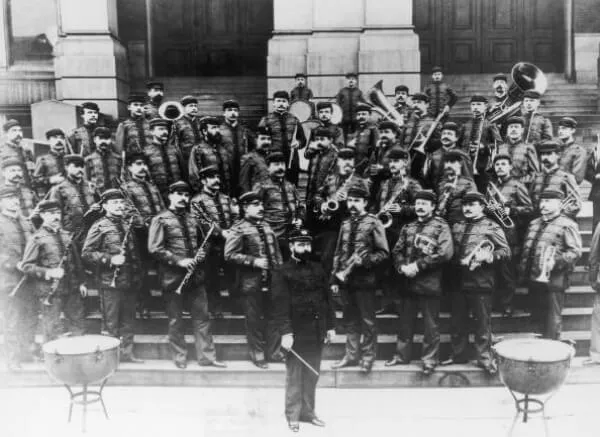
When it came for the Pythons to settle on one particular tune for their theme song, they chose John Phillip Sousa's "The Liberty Bell", as played by the band of the Grenadier Guards. The sole reason why they choose it was for financial reasons.
Since the times were much different back then, there was no Apple Music or Spotify. Basically, since there were no paid music apps and it was in the public domain, the use of the song for Monty Python was totally free to use, which is obviously a huge sell.
Take a guess which former Beatle arranged financing for Life of Brian through the formation of his company.
Whose Foot Is That?
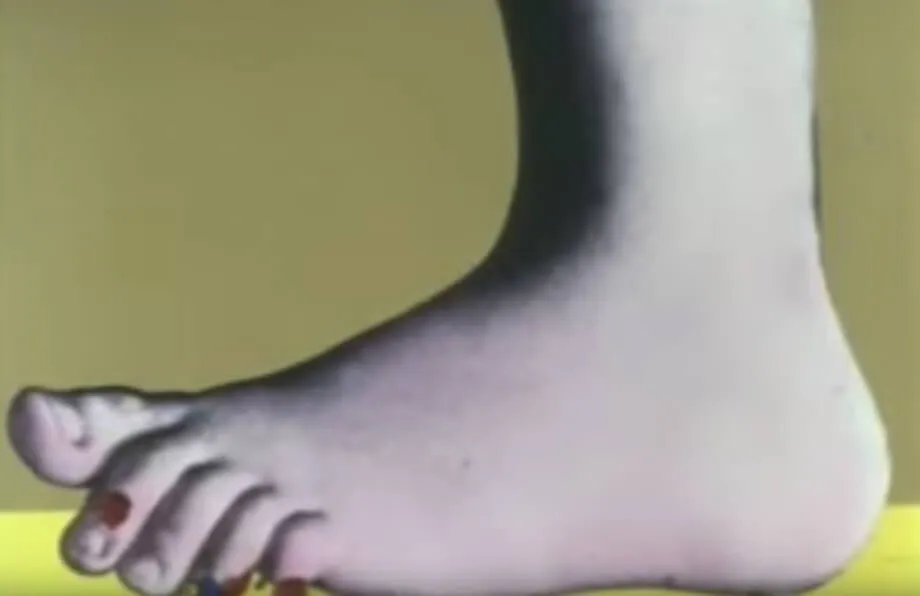
The animated intro to the Flying Circus was significant with the giant foot in the opening credits. Interestingly enough, that giant foot actually belongs to Cupid. Yup, the one who strikes love in all of us also has the big foot used in the opening credits.
The foot comes from Bronzino's painting "An Allegory with Venus and Cupid". According to the National Gallery, the painting dates back to about 1545 and was presented to King Francis I of France as a gift. Terry Gilliam found the painting at the National Gallery when searching for some Flying Circus inspiration.
Almost Cancelled

It was once revealed that the Pythons were paid about $200 per episode. According to some unearthed internal memos, BBC1 controller, Paul Fox, said the troupe went "over the edge of what was acceptable". Basically, the troupe was constantly pushing the boundaries to the best of their ability.
Entertainment chief Bill Cotton once thought Monty Python seemed to have some sort of death wish. Despite those thoughts and low audience ratings, the show managed to hang on for three and a half seasons, for 45 total episodes through 1974.
With A Little Help From George
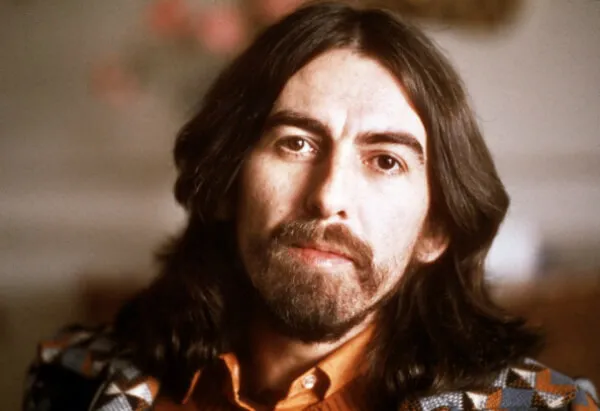
After the Flying Circus, the Pythons were looking to take another step. They did so by making a religious satire titled Monty Python's Life Of Brian. The film told the story of Biran Cohen who was born on the same day as Jesus Christ and mistaken for the Messiah.
Following the withdrawal of funding by EMI Films, the Pythons needed a company to produce the movie. Just days before production was scheduled to begin, long-time Monty Python fan and former Beatle George Harrison arranged for financing for the moving through the formation of his company HandMade Films.
Monty Python's Controversy
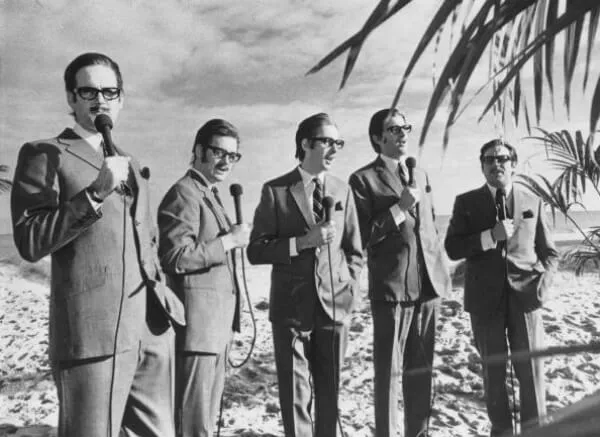
Several councils, including a few that didn't even have cinemas within their boundaries, banned Life Of Brian saying it was blasphemous. The film contains themes of religious satire that were controversial at the time of its release, drawing protests from religious groups.
Authorities in the United Kingdom either imposed an outright ban or imposed an X certificate (18A), preventing the film from being shown, since the distributors said it could not be shown unless it was unedited and carried the original AA (14A) certificate.
Cleese, Out

Despite being the oldest member of the Pythons, John Cleese is a name most people should know. In fact, years after the days of Monty Python, Cleese had a cameo as Nearly Headless Nick in the Harry Potter films. But, there was a reason why Cleese wanted out of the Pythons.
By the start of the show's third series, Cleese was growing tired of dealing with Chapman's alcoholism. He also felt that the show's scripts had declined in quality. Cleese decided on a flight to Toronto that he was done with the Pythons, but after hours of talking, he agreed to only work with them on future films.
A Tribute To The Flying Circus

When Elon Musk told people of SpaceX's larger and more powerful rocket, Falcon Heavy, he reminded everyone that he once launched a wheel of cheese into space, all because of the members of Monty Python.
The cheese launch Musk referred to happened on December 8, 2010, on the maiden flight of the first version of SpaceX's Dragon space capsule. The giant wheel of cheese was inspired by not only a friend of Musks' but as a tribute to the troupe of Monty Python.
To make Holy Grail, Terry Gilliam and Terry Jones had to do something they had never done before.
The Show That Started Spam

Spamming is nothing but unsolicited emails that nobody wants to bother with. Interestingly enough, the "Spam" sketch on the Flying Circus has something to do with the term. Spam was named after the classic sketch where everything on the menu is spam.
In the sketch, two customers are lowered by wires into a greasy spoon cafe and try to order breakfast from a menu. It's filled with nothing but spam, much to the consternation of one of the customers. Now, we all know what it's like to get the unsolicited things we don't want.
Attempting A World Record

Led by Terry Jones and Terry Gilliam, and the cast of Spamalot, 5,567 people in Trafalgar Square came together in 2007 with the hope of setting a new world record. They were aiming to break the record for the largest coconut orchestra ever heard.
Thanks to the thousands of people who showed up, they were able to break the record. Basically, all they did was "clip-clop" along to "Always Look On The Bright Side Of Life." The same song can also be heard by Eric Idle in The Life of Brian movie.
Holy Grail
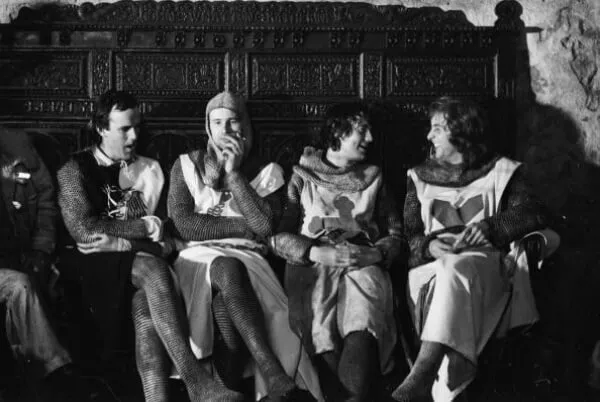
When it came to Holy Grail, neither Terry Gilliam or Terry Jones had directed a film before and described it to be as a learning experience. The biggest thing they had to learn was how to make an entire full-length film. On top of that, the film's initial budget was approximately 200,000 pounds.
The movie was shot on a very tight budget and filming had to continuously stop due to the wind. Whenever they were filming and it became windy, the castle, made out of a plywood cut-out, kept falling over because of the strong breeze. But, that annoyance didn't stop the film from doing great.
The Seventh Python

There were originally six members of Monty Python, but Neil Innes has often been described as the seventh Python. Innes provided music to the TV shows and worked with the Python Offshoots including The Rutles. In the mid-seventies, he closely worked with the Python crew.
Innes contributed music to their albums Monty Python's Previous Record, The Monty Python Matching Tie, and Handkerchief. He even played a major role in performing and writing songs and sketches for their final TV series, which aired in 1974.
Terry Jones Received A Dementia Diagnosis In 2014

In July of 2014 Terry Jones starting showing signs that his health might be declining. His fellow performers noticed he couldn't remember his lines anymore, and soon his speech began to deteriorate. In September 2015 he was diagnosed with frontotemporal dementia, the area of the brain that controls social cues and language.
His daughter Sally told The Guardian, "For someone who lived by words and discussions this was tragic." However, friends said he still enjoyed life and loved having company over. Pictured are Michael Palin, left, and Terry Jones on the right. Palin shared the photo shortly after Jones' diagnosis.
Terry Jones, 1942 – 2020

On January 21, 2020, Terry Jones' family released a statement announcing that the comedy legend had passed away at home over the weekend. "Over the past few days his wife, children, extended family and many close friends have been constantly with Terry as he gently slipped away at his home in North London," it read.
Upon hearing the news, an outpouring of love and support deluged social media outlets. John Cleese tweeted, "It feels strange that a man of so many talents and such endless enthusiasm, should have faded so gently away," adding, "Two down, four to go." Michael Palin said that "Terry was one of my closest, most valued friends. He was kind, generous, supportive and passionate about living life to the full."
Life After Graham Chapman

Graham Chapman was originally a medical student. He completed his medical training and was legally entitled to practice as a doctor. He was best remembered for the lead roles in Life Of Brian as Brian Cohen and King Arthur in Holy Grail. Unfortunately, the six became five when Chapman passed away due to cancer on October 4, 1989.
After Chapman's death, the remaining Pythons went on, and would reunite 10 years later. The Pythons agreed in principle to tour America, but Michal Palin changed his mind and said he didn't want to do it, much to the annoyance of Eric Idle.
God Was A Cricket Player

Of all the hilarious moments from the Holy Grail, many Python fans might not know the truth behind one of the greatest mysteries of the film. The animated God used in the film, which was created by Terry Gilliam, is a picture of former cricketer WG Grace.
Right-handed as a batsman and bowler, Grace dominated the sport during his career. It's not surprising that a British comedy group would take one of their own and mold the man into God himself. Quite frankly, he does look he's the brother of God too.
Dead Parrot Sketch
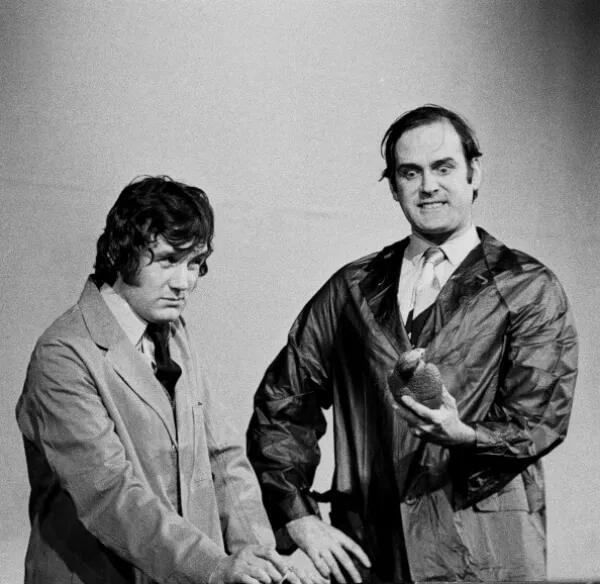
John Cleese and Graham Chapman penned How To Irritate People, a sketch which also starred Michael Palin that aired in the US. Eventually, that sketch would turn into one of the funniest sketches from the Pythons- the "Dead Parrot".
The original sketch had Chapman complaining that the car he had just purchased from Palin was literally falling apart, with Palin consistently denying the glaring, mounting evidence. Cleese and Chapman revived the idea for the first season of Flying Circus, but instead of a car it was a dead parrot.
13681 Monty Python

On August 7, 1997, Milos Tichy and Zdenek Moravec discovered an asteroid at the Klet Observatory near Cesky Budovice, Czech Republic. This wasn't any ordinary asteroid, and it didn't threaten to wipe out mankind like Armageddon. But, both Tichy and Moravec had a brilliant name for their discovery.
Asteroid 13681 became widely known as Asteroid 13681 Monty Python. The asteroid was named after the legendary comedy group as both Tichy and Moravec were fans of the show growing up. Too bad they didn't own a parrot named Monty.
Spamalot
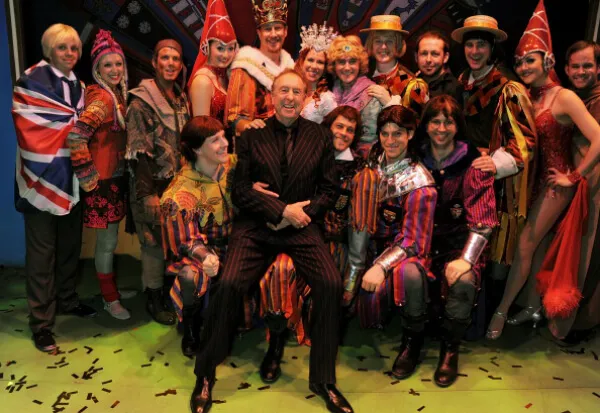
The musical comedy adapted from Holy Grail was created by Eric Idle himself. Like the motion picture, it is a highly irreverent parody of the Arthurian Legend, but it differs from the film in different ways. The Broadway production won three Tony Awards, with 14 Tony nominations overall.
During its initial run of over 1,500 performances, it was seen by more than two million people and it's grossed over $175 million. Tim Curry, Hank Azaria, and David Hyde Pierce starred in the original show, but Craig Robinson and Jesse Tyler Ferguson were in the Hollywood show.
ABC Got Sued By The Pythons
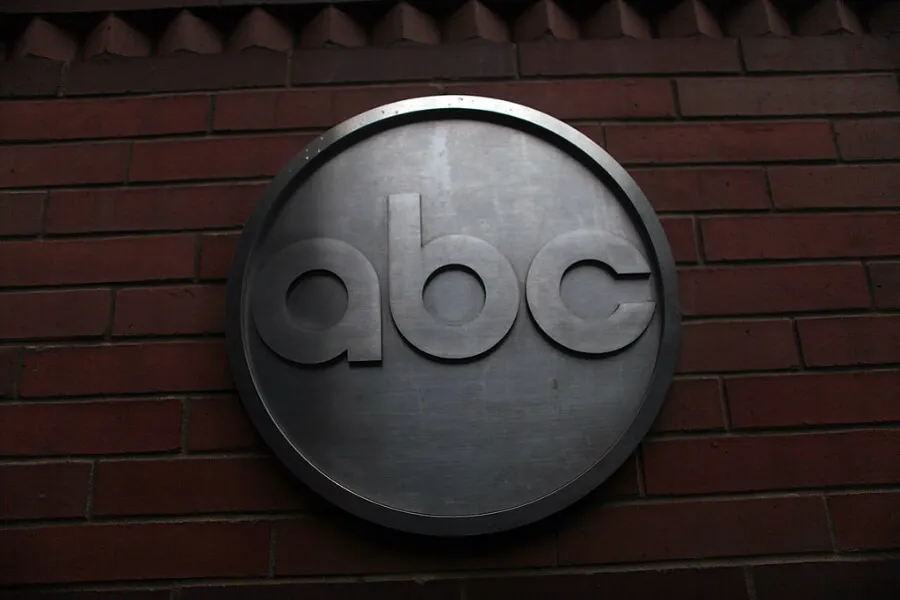
ABC acquired the American rights to the six episodes of season four, which they wanted to run as two 90 minute, late-night specials. When the troupe saw how ABC put together the first special, the filed for an injunction against ABC running the second special.
The Pythons sued the network, and Gilliam and Palin appeared in court in New York. The judge wanted both versions, and laughed more at the original British cuts, but ruled in ABC's favor. By the time the US Court Of Appeals heard the case in December 1975, the second special had already aired. The rights to the episodes went back to the Pythons and sold to PBS.
The Return Of The Flying Circus

On July 1, 2014, Monty Python staged a show at the O2 in London. It was planned as a single performance, but it was expanded to 10 shows due to the high demand for tickets. It was their first live performance together in 34 years, and to date, it has been their last.
In fact, since they owed legal fees for Holy Grail, the reunion was proposed to pay it off. They even had some special guests during the shows too, from British actors Warwick Davis to Simon Pegg to Eddie Izzard and Canadian Mike Myers.









